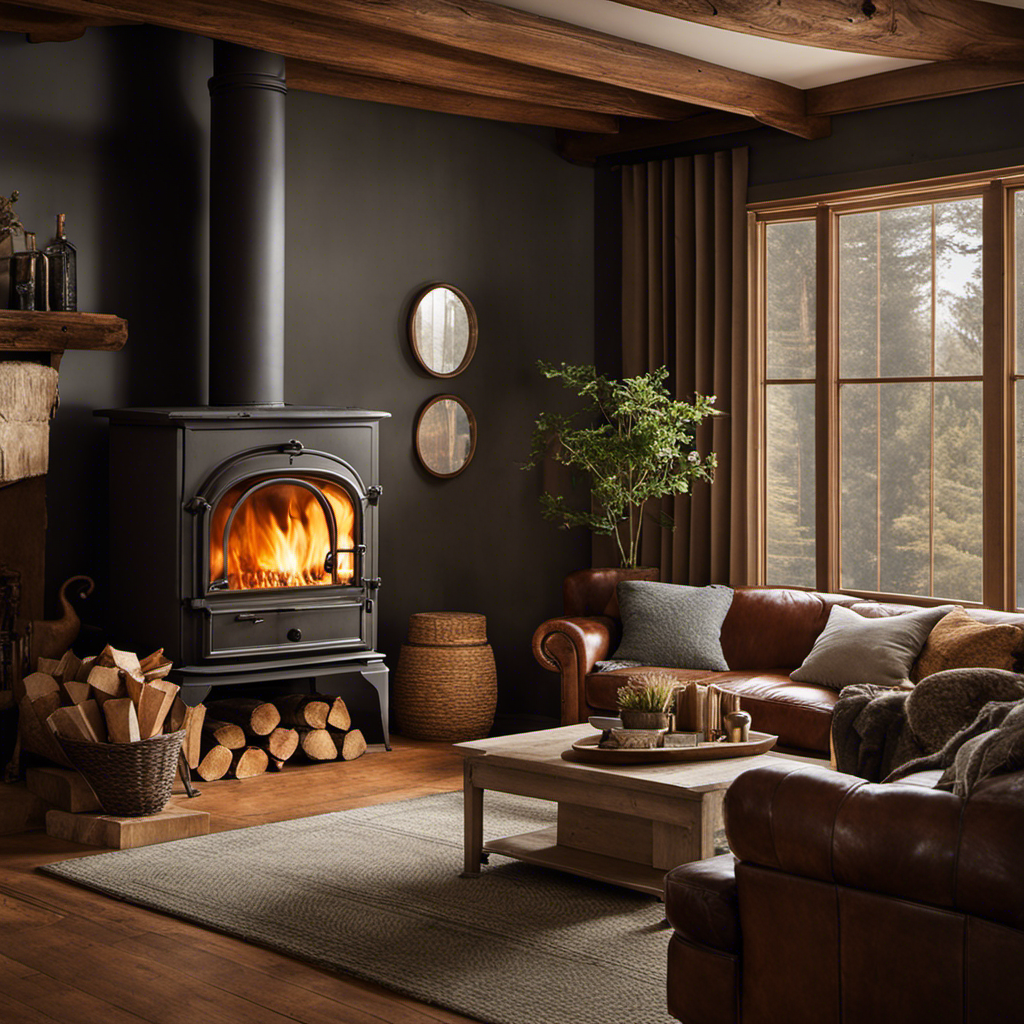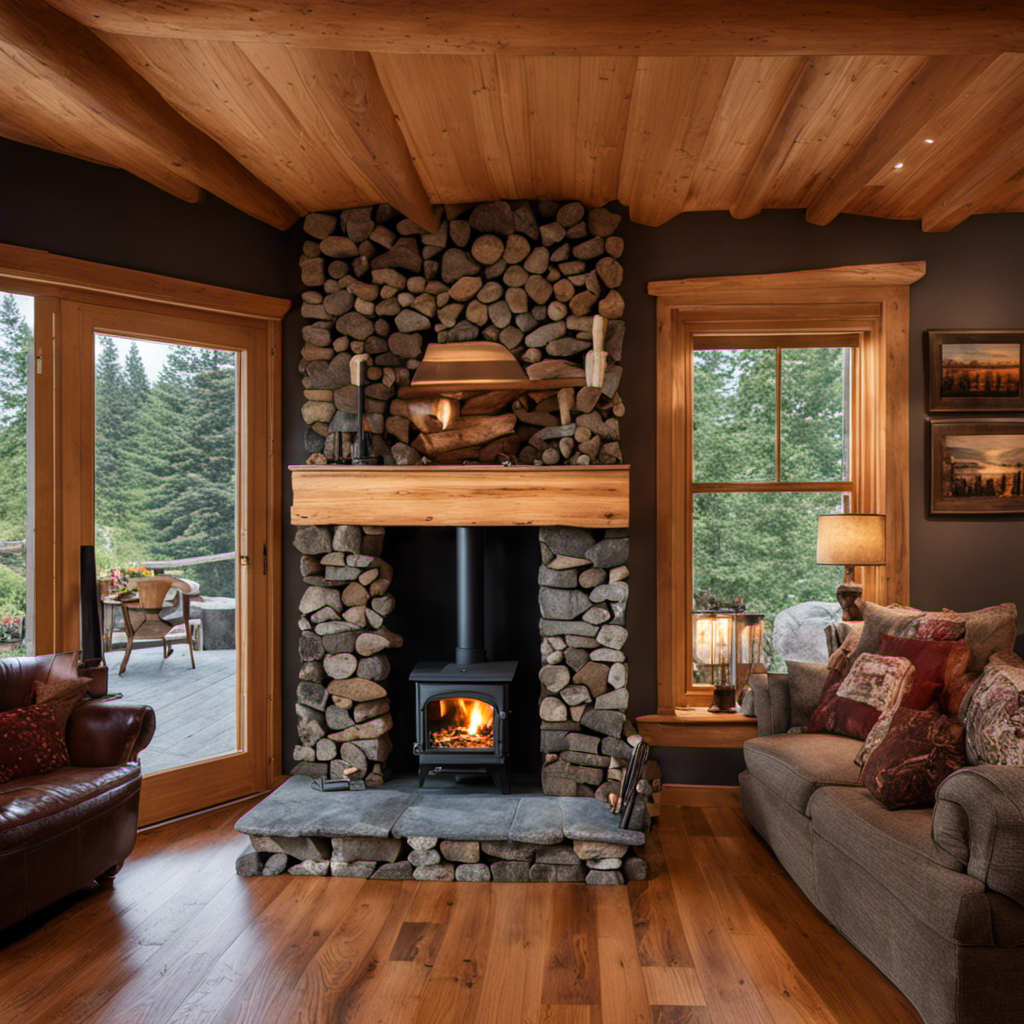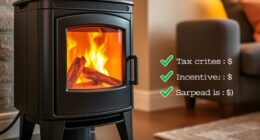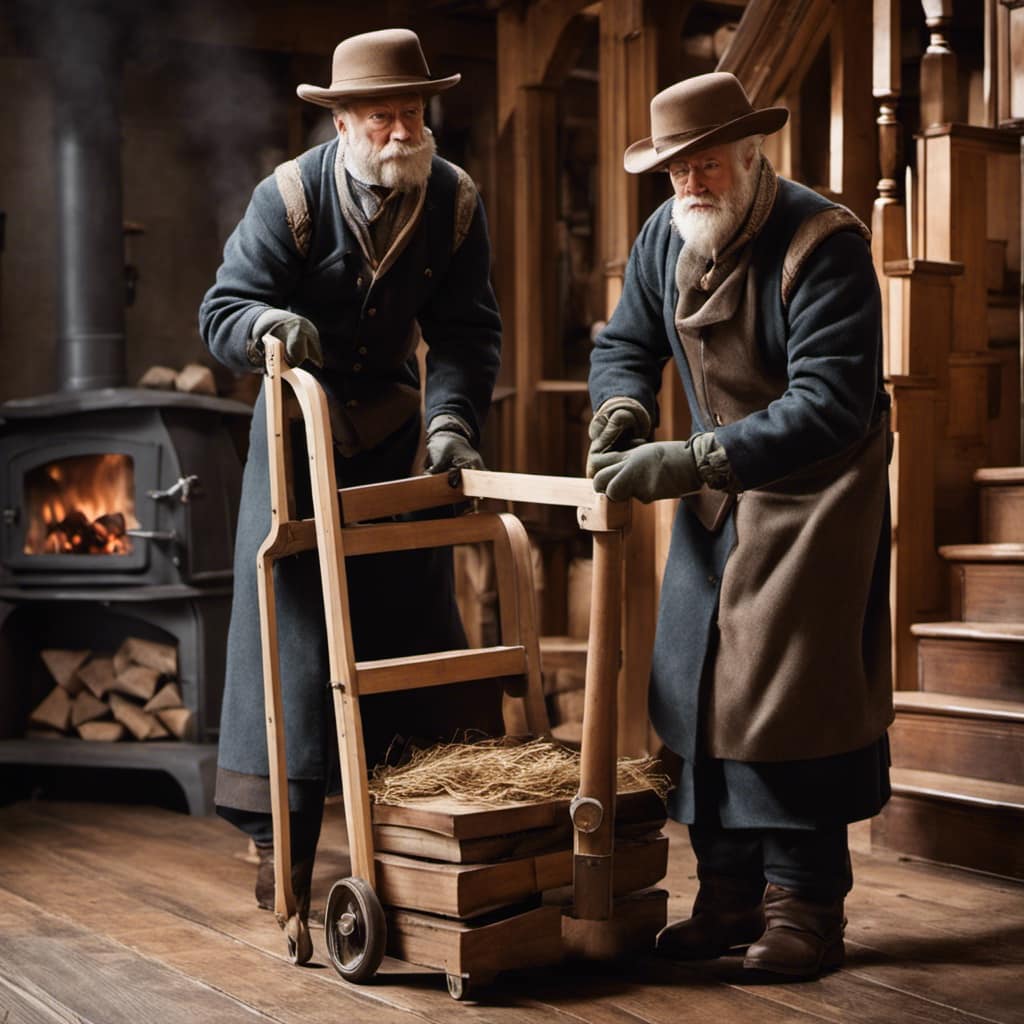
After years of using wood stoves, I’ve found that the secret to keeping a warm and inviting home is mastering the art of burning wood efficiently. In this article, I’ll share my proven techniques for choosing the best wood, preparing it for burning, creating a successful fire, and managing the fire’s heat.
With these tips, you’ll be able to maximize heat output and minimize smoke and ash. Get ready to stoke the fire and enjoy the comforting crackle that only a wood stove can provide.
Key Takeaways
- Hardwoods like oak and maple are the best types of wood for burning in a wood stove.
- Properly preparing and storing firewood is crucial for efficient burning.
- Building and maintaining a proper fire involves arranging kindling and newspaper in a crisscross pattern and following fire safety precautions.
- Regular cleaning and maintenance of a wood stove, including removing ash and inspecting for obstructions, is essential for proper functioning and safety.
Selecting the Right Type of Wood
I find that hardwoods like oak and maple work best for burning in a wood stove. Hardwoods have a higher density than softwoods, which means they burn slower and produce more heat. They also tend to have a lower moisture content, which is crucial for efficient burning.
When it comes to selecting the right type of wood for your wood stove, it’s important to consider factors such as heat output, burn time, and overall efficiency.
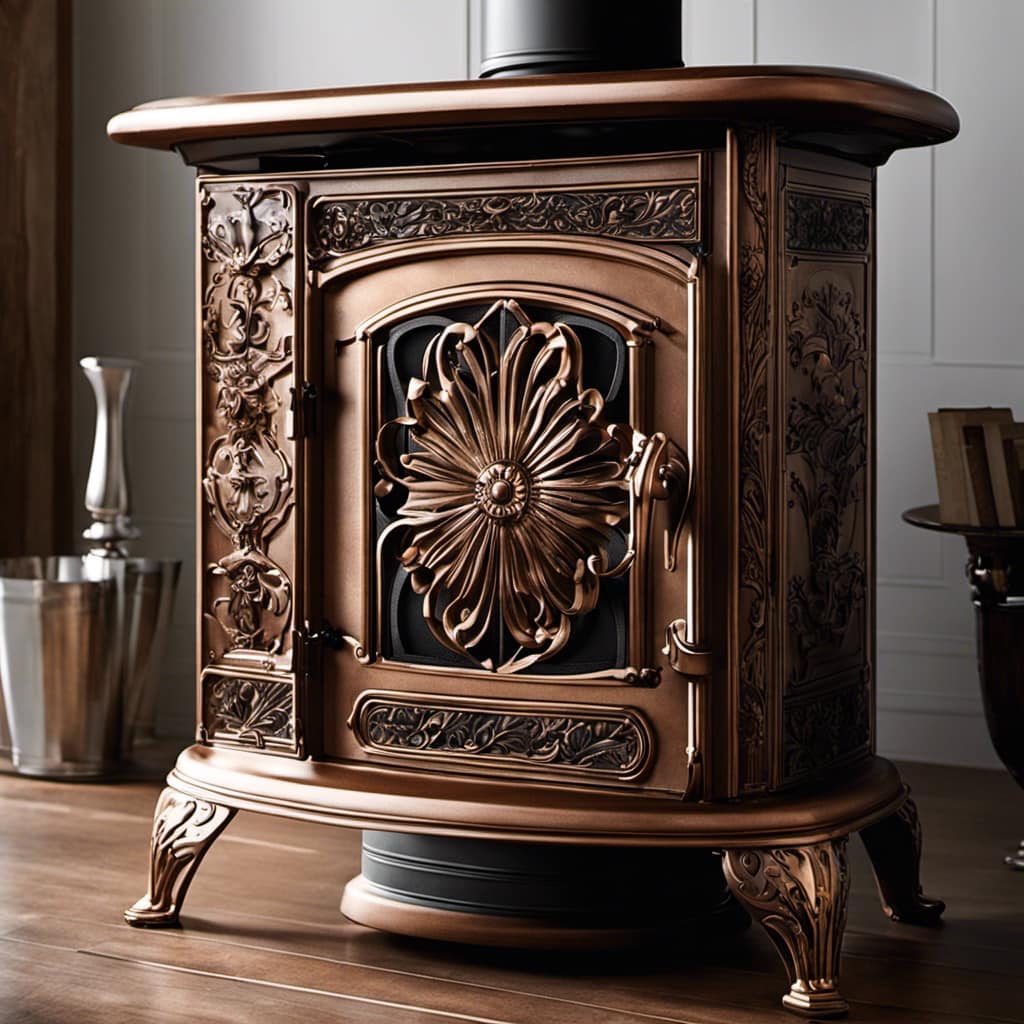
To ensure that your firewood is ready for burning, it’s important to properly store and season it. Storing firewood in a dry, well-ventilated area is key to preventing moisture absorption. Seasoning firewood involves allowing it to dry out for at least 6 months to a year, depending on the type of wood. This process removes excess moisture and ensures a clean, efficient burn.
Preparing the Wood for Burning
To get the fire started, I always make sure the wood is properly seasoned and cut into smaller pieces. Splitting firewood is an essential step in preparing it for burning. This process allows for better airflow and faster ignition. I use a splitting maul and a wedge to split the larger logs into manageable pieces. Once split, I store the firewood in a dry and well-ventilated area to ensure it remains seasoned. Storing firewood properly is crucial to maintain its quality. Here is a table summarizing the steps to prepare firewood for burning:
| Step | Description |
|---|---|
| Splitting firewood | Use a splitting maul and wedge to split logs |
| Cutting into smaller pieces | Make sure the wood is cut into manageable sizes |
| Storing firewood | Keep the firewood in a dry and well-ventilated area |
Building a Proper Fire in Your Wood Stove
When starting a fire, it’s important to arrange the kindling and newspaper in a crisscross pattern to promote airflow and ensure a proper burn.
Before I light the fire, I always make sure to follow some fire safety precautions. First, I check that the flue is open to allow smoke to escape. Then, I ensure that there’s a fireproof barrier around the stove to prevent any accidents.
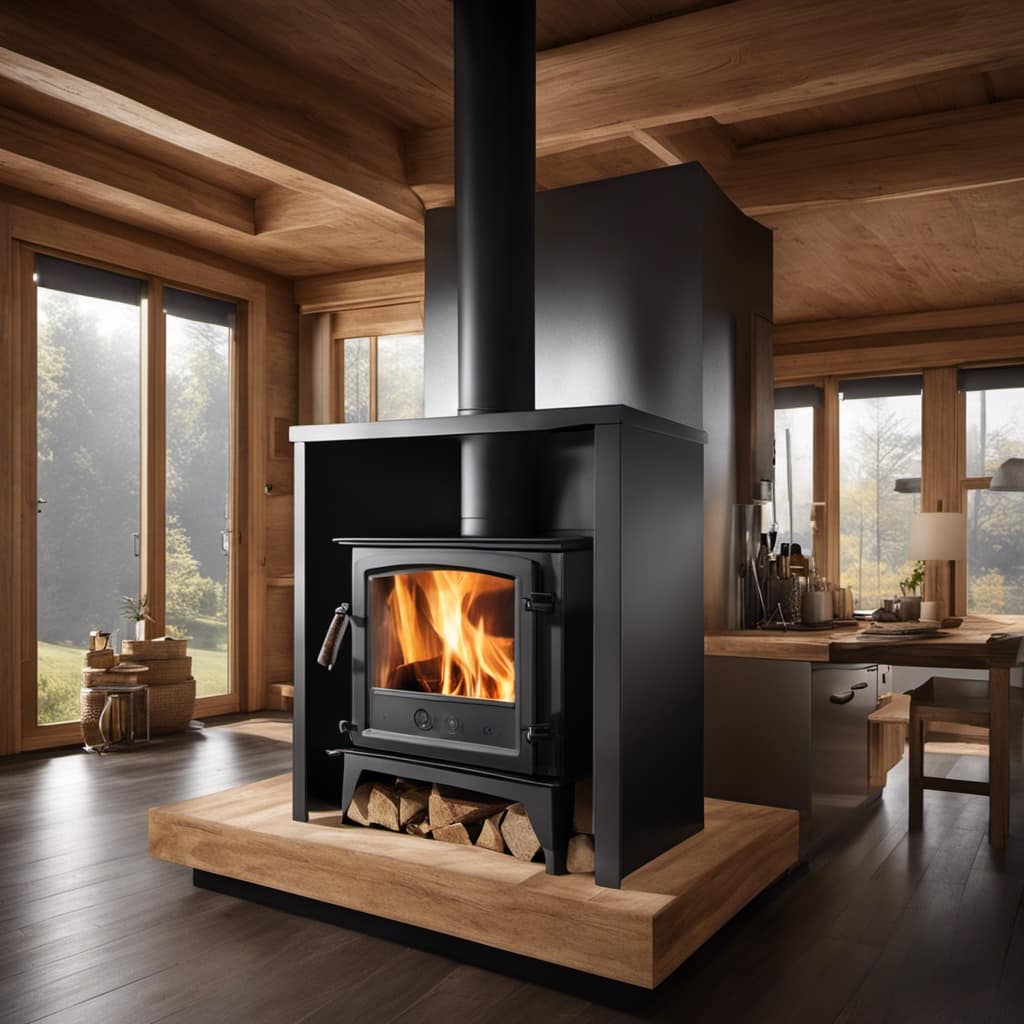
Now, let’s talk about the benefits of using a wood stove for heating. Not only does it provide a cozy and warm atmosphere, but it also reduces energy costs. Wood is a renewable resource, making it an environmentally friendly option. Additionally, wood stoves can be used during power outages, ensuring a reliable heat source.
Maintaining and Controlling the Fire
Maintaining a consistent temperature in the fire is crucial for efficient heating and preventing any potential hazards. Controlling airflow is a key aspect of maintaining and controlling the fire in a wood stove. By adjusting the dampers, you can regulate the amount of oxygen that feeds the fire, allowing you to increase or decrease the intensity of the flames.
Troubleshooting common fire issues, such as a smoky fire or difficulty in lighting, often involves adjusting the airflow. If you’re experiencing a smoky fire, try opening the damper to allow more oxygen in. If you’re having trouble lighting the fire, try opening the damper fully to increase the airflow.
Cleaning and Maintaining Your Wood Stove
Cleaning the ash from my wood stove is an important part of regular maintenance. Not only does it help to keep the stove functioning properly, but it also ensures a safer and more efficient burn.
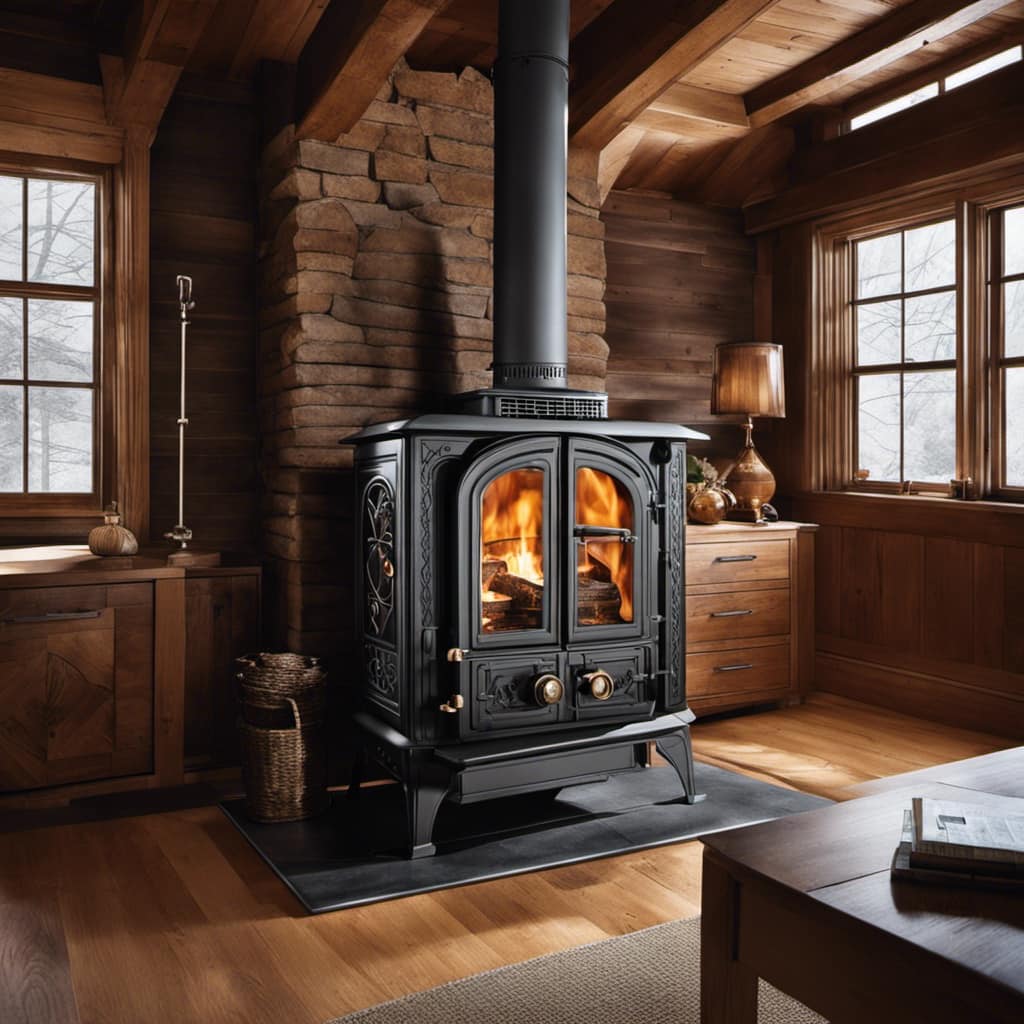
To effectively clean my wood stove, I rely on a few essential tools:
- Ash shovel: This sturdy tool allows me to scoop up the ash and debris from the stove without making a mess.
- Wire brush: A wire brush is perfect for scrubbing away any stubborn soot or creosote buildup on the stove’s surfaces.
- Vacuum cleaner: Using a vacuum cleaner with a brush attachment helps to remove any remaining ash and dust from the stove and its surrounding area.
In addition to regular cleaning, there are a few common maintenance issues to be aware of. These include checking and replacing gaskets, inspecting the chimney for obstructions, and ensuring proper airflow through the stove.
Frequently Asked Questions
How Do I Know if My Wood Stove Is Properly Installed?
If my wood stove is properly installed, there are certain signs to look out for. These include proper ventilation, correct clearances from combustible materials, and a secure chimney connection.
Can I Burn Treated or Painted Wood in My Wood Stove?
Burning treated or painted wood in a wood stove is not recommended. The chemicals in treated wood, when burned, can release harmful toxins. Additionally, burning painted wood can release fumes that can be hazardous to your health.

How Often Should I Clean the Chimney of My Wood Stove?
I clean the chimney of my wood stove at least once a year. Regular chimney cleaning is important to prevent creosote buildup and ensure proper ventilation. It’s a routine maintenance task that helps keep my wood stove running efficiently.
Is It Safe to Leave a Fire Burning Overnight in a Wood Stove?
Yes, it is safe to leave a fire burning overnight in a wood stove, as long as you follow proper safety precautions. However, it is important to note that burning wood in a wood stove does release harmful pollutants into the air. Is it efficient to burn wood pellets in a wood stove? It depends on the specific stove and the type of wood pellets being used.
What Are Some Common Signs That My Wood Stove Needs Repairs or Maintenance?
When it comes to signs of wood stove repairs, keep an eye out for excessive smoke, difficulty starting a fire, or a cracked glass door. Regular maintenance, like cleaning the chimney, ensures optimal performance.
Conclusion
In conclusion, mastering the art of burning wood in a wood stove is essential for efficient and enjoyable heating. By selecting the right type of wood, preparing it properly, and building a proper fire, you can create a warm and cozy environment in your home.
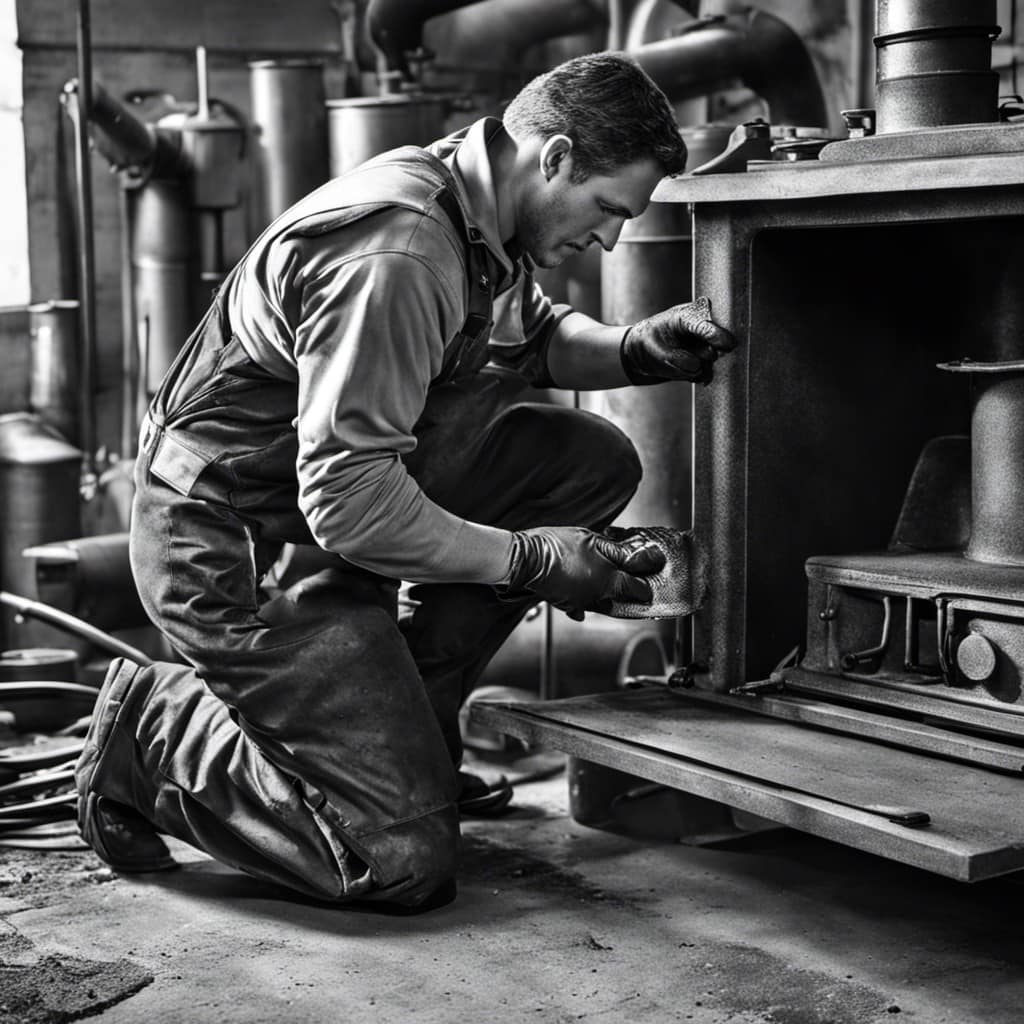
Remember to maintain and control the fire to ensure safety and efficiency. Regular cleaning and maintenance of your wood stove will keep it running smoothly for years to come.
Now, go forth and enjoy the comforting warmth of a well-burning wood stove.
Growing up surrounded by the vast beauty of nature, Sierra was always drawn to the call of the wild. While others sought the comfort of the familiar, she ventured out, embracing the unpredictable and finding stories in the heartbeat of nature.
At the epicenter of every remarkable venture lies a dynamic team—a fusion of diverse talents, visions, and passions. The essence of Best Small Wood Stoves is crafted and refined by such a trio: Sierra, Logan, and Terra. Their collective expertise has transformed the platform into a leading authority on small wood stoves, radiating warmth and knowledge in equal measure.






